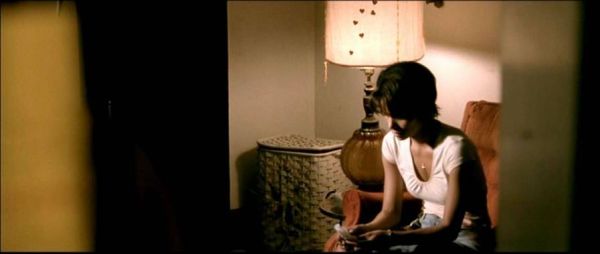Difference between revisions of "TCF440540/BordwellThompson/Cinematography (Discussion)"
From Screenpedia
Jump to navigationJump to search (→External links: fixed link) |
|||
| Line 1: | Line 1: | ||
| − | #'''Group | + | #'''Group 3:''' What is depth of field? |
| − | |||
| − | |||
| − | |||
| − | |||
#*Define these terms and provides examples of when these techniques might be used: | #*Define these terms and provides examples of when these techniques might be used: | ||
#**Shallow focus | #**Shallow focus | ||
#**Deep focus | #**Deep focus | ||
#**Pulling focus (What's another name for it?) | #**Pulling focus (What's another name for it?) | ||
| − | #'''Group | + | #'''Group 4:''' What is aspect ratio? |
#*Define these terms | #*Define these terms | ||
#**Academy Ratio: 1.33 : 1 or 4 : 3 | #**Academy Ratio: 1.33 : 1 or 4 : 3 | ||
| Line 15: | Line 11: | ||
#***Masked 1.85 : 1 | #***Masked 1.85 : 1 | ||
#***TV widescreen: 16 : 9 or 1.78 : 1 | #***TV widescreen: 16 : 9 or 1.78 : 1 | ||
| − | #*What are the aspect ratios of '' | + | #*What are the aspect ratios of ''Ordinary People'', ''Shakespeare in Love'' and ''Monster's Ball''? |
| − | #'''Group | + | #'''Group 1:''' What is focal length? |
| − | |||
| − | |||
| − | |||
#*Define these focal-length terms and provides examples of when these techniques might be used: | #*Define these focal-length terms and provides examples of when these techniques might be used: | ||
#**Wide angle | #**Wide angle | ||
#**Telephoto | #**Telephoto | ||
#**''Variable'' focal length lens (what's another, more common name for it?) | #**''Variable'' focal length lens (what's another, more common name for it?) | ||
| + | #'''Group 2:''' What do B/T mean by the "mobile frame"? | ||
| + | #*Explain the differences among these types of mobile frames and provides examples of when these techniques are used in the ''Shakespeare in Love'' and ''Monster's Ball'' clips: | ||
| + | #**Pan | ||
| + | #**Tilt | ||
| + | #**Tracking or dolly shot | ||
| + | #*Explain the difference between a tracking/dolly shot and a zoom. | ||
==Cinematography and narrative== | ==Cinematography and narrative== | ||
| − | In the ''Monster's Ball'' scene we viewed, what narrative functions does the cinematography serve? Be sure to consider deep/shallow focus, focus shifts and framing in the third shot. | + | '''All groups:''' |
| + | |||
| + | In the ''Monster's Ball'' scene we viewed, what narrative functions does the cinematography serve? Be sure to consider deep/shallow focus, focus shifts and framing in the third shot. | ||
[[Image:MonstersBall01.jpg|thumb|left|600px|Shot three from the ''Monster's Ball'' scene begins.]] | [[Image:MonstersBall01.jpg|thumb|left|600px|Shot three from the ''Monster's Ball'' scene begins.]] | ||
Revision as of 15:59, 20 January 2010
- Group 3: What is depth of field?
- Define these terms and provides examples of when these techniques might be used:
- Shallow focus
- Deep focus
- Pulling focus (What's another name for it?)
- Define these terms and provides examples of when these techniques might be used:
- Group 4: What is aspect ratio?
- Define these terms
- Academy Ratio: 1.33 : 1 or 4 : 3
- Widescreen
- Anamorphic 2.35 or 2.4 : 1
- Masked 1.85 : 1
- TV widescreen: 16 : 9 or 1.78 : 1
- What are the aspect ratios of Ordinary People, Shakespeare in Love and Monster's Ball?
- Define these terms
- Group 1: What is focal length?
- Define these focal-length terms and provides examples of when these techniques might be used:
- Wide angle
- Telephoto
- Variable focal length lens (what's another, more common name for it?)
- Define these focal-length terms and provides examples of when these techniques might be used:
- Group 2: What do B/T mean by the "mobile frame"?
- Explain the differences among these types of mobile frames and provides examples of when these techniques are used in the Shakespeare in Love and Monster's Ball clips:
- Pan
- Tilt
- Tracking or dolly shot
- Explain the difference between a tracking/dolly shot and a zoom.
- Explain the differences among these types of mobile frames and provides examples of when these techniques are used in the Shakespeare in Love and Monster's Ball clips:
Cinematography and narrative
All groups:
In the Monster's Ball scene we viewed, what narrative functions does the cinematography serve? Be sure to consider deep/shallow focus, focus shifts and framing in the third shot.
Bibliography
- David Bordwell and Kristin Thompson, Film Art: An Introduction, 9th ed. (New York: McGraw-Hill, 2010).

